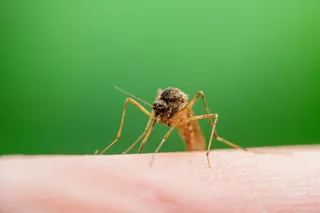After many frustrating years, AIDS researchers finally have reason to believe that the human immunodeficiency virus (hiv) can be controlled. Several studies reported in 1996 found that a combination of drugs could sharply curtail the amount of virus in the bloodstream--in many cases reducing it to undetectable levels. Since the virus count is the best predictor of how the disease will progress, it now seems that aggressive drug therapy may provide a powerful weapon against aids.
The recent successes depend on the addition of a new class of drugs, called protease inhibitors, to the anti-hiv arsenal. The older antiviral drugs--such as azt and 3tc--block reverse transcriptase, an enzyme the virus needs to copy its genetic material into a host cell’s DNA. Protease inhibitors, in contrast, block an enzyme that helps assemble the virus at a later stage in its life cycle. Because that protease enzyme is smaller and thus less prone to mutations that might make it drug-resistant, and because the protease inhibitors themselves are more readily absorbed into an hiv-infected cell, they may be more effective at shutting down viral replication.
David Ho, a virologist at the Aaron Diamond aids Research Center in New York City, is conducting several trials of drug combinations. Last summer, he reported results from a trial involving nine men who received three drugs--a protease inhibitor, azt, and 3tc--within 90 days of being infected with hiv. At that stage of infection, Ho explains, the diversity of the virus is relatively low, thus limiting the possibility of drug- resistant mutants. Within a few months of treatment, hiv could not be detected in the men’s blood. Even after a year of treatment no trace of it could be found.
The virus has to mutate at many positions simultaneously if it is to resist the three drugs we’re giving, says Ho. And it finds that very difficult to do.
Even in much more advanced cases of infection, drug combinations that include a protease inhibitor have worked well. This past year, in a study conducted at four medical centers around the country, New York University’s Roy Gulick and his colleagues gave three drugs to 97 patients who had already taken azt, on average for over two years. These patients--a diverse mix of ages, races, and sexes--had virus levels averaging 41,000 copies per milliliter of blood. Yet after another year of treatment with azt, now supplemented with 3tc and a protease inhibitor, some 80 percent of the patients showed no trace of virus at all. Meanwhile, their counts of cd4 T cells--the virus’s main target--had risen dramatically. Equally promising results were reported in 1996 from a study of 1,090 patients with advanced aids: those who added a protease inhibitor to their drug regimen had a 50 percent lower mortality rate than those receiving a placebo.
Both Ho and Gulick plan to sample the lymph nodes of patients whose blood appears to be virus-free. If the lymph nodes show no signs of the virus, the researchers and the patient will face the difficult question of whether to stop drug treatment. Patients cannot be considered free of the disease until all virus-infected cells throughout the body die. How long that might take, says Ho, is not known. It is not yet clear, for instance, whether the new drug combinations can reach such areas as the brain, where the virus is tucked away.
Moreover, even if the drugs are as effective as they seem, several compelling problems remain. First, triple-drug therapy is so expensive--up to $15,000 or more a year--that it will probably remain unavailable to many uninsured patients in this country, let alone to patients in the poor countries of Africa and Asia that have been hard hit by aids. Second, despite the drugs’ comparatively mild side effects, patients must have tremendous discipline to adhere to the treatment regimen--which ranges from 14 to 20 pills a day. Third, the possibility remains that hiv mutants will emerge that are resistant even to drug combinations.
Still, the prospects for treating hiv-infected patients are better than ever before. Just as combinations of drugs have worked against diseases like tuberculosis and cancer, triple-drug therapy may work for hiv, especially if treatment begins soon after infection. It’s like treating breast cancer, Ho speculates. If you pick it up early, your chances of a complete remission are very high. Gulick is more cautious. You hear a lot of talk these days about eradicating the virus from the body, he says. If anyone had mentioned that idea two years ago, they would have been laughed out of the room. It is interesting to think we can even begin to imagine that approach. But until we’re there, managing the disease as a chronic illness is pretty acceptable.














